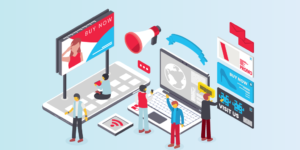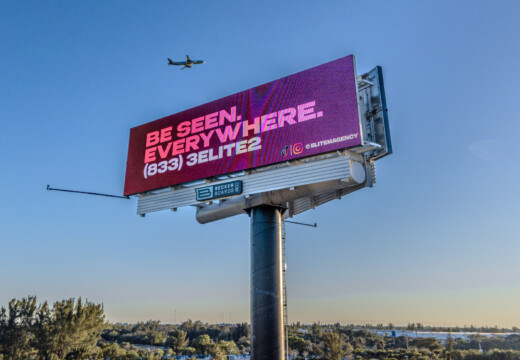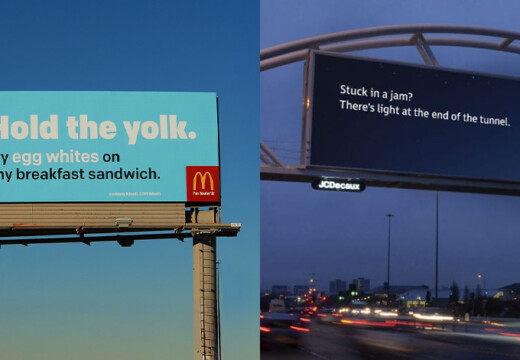Does Billboard Advertising Work in 2020?
Most small- to medium-sized businesses (SMB’s) are working with a limited ad budget. They’re also looking for ways to stretch their marketing dollars and to avoid spending half their budget on agency support.
But where to start? And how to spend? In the dynamic landscape of programmatic display advertising, Facebook ads, and hyperlocal targeting, you might be wondering if good old fashioned billboard advertising is worth the investment.
And you might be surprised to discover that the answer is a resounding “yes.”
Why? Because there’s nothing old fashioned about today’s digital billboards. And, most importantly, because out of home (OOH) advertising just works.
We’ve rounded up some of the most useful out of home advertising statistics we could find to help you understand how and why digital billboards can be an integral piece of any SMB’s marketing budget.
10% Annual Growth Through 2021
Advertisers across the globe are investing in digital out of home advertising (DOOH). A 2018 WARC report found that DOOH advertising is expected to grow 10% each year between 2018 and 2021.
Digital billboards allow you to make strategic changes to your budget and ad schedule in real-time. And because digital billboards look and function similarly to display ads, they create more cohesion between the ads you’ve got running across multiple channels.
Digital technology has revolutionized the OOH advertising industry such that, far from decreasing spend, companies are actually investing more than ever in billboards and other forms of digital outdoor advertising.
Best of all, when used correctly, digital signage will increase your brand exposure, create familiarity, and ultimately increase the ROI of your marketing spend.
497% ROI
According to a recent report, every dollar spent on OOH advertising returns an average of $5.97 in product sales. [Source] That’s an ROI of 497%.
As the Out of Home Advertising Association of America (OAAA’s) chief marketing officer Stephen Freitas stated in the report’s 2017 press release, “Using OOH in any campaign makes it more effective. This new report tells us advertisers see their sales grow and brand awareness increase when OOH is used in the media mix.”
Billboards and other forms of OOH advertising are most effective when they work in addition to your other marketing and advertising channels to deliver a cohesive message across multiple mediums to increase customer touchpoints. So, why are multiple touchpoints important?
Seven Brand Exposures
Consistent and cohesive messages or touchpoints are important because of the rule of seven.
Studies have shown that consumers need an average of seven exposures to a business or brand before they make a purchasing decision. Those seven exposures are most effective when the messaging is cohesive but drive different objectives as a customer progresses through the buying journey.
Take a small business like Alena’s Chocolate Shop for example. They might use billboards for the initial touchpoints to build general awareness for their online chocolate shop. The messaging at this point in the buying journey would be simple, focused on their business name and URL.
Later, Alena’s Chocolate Shop would leverage digital advertising channels for touchpoints that are more focused on brand-building and transactional sales activations. The messaging of these later touchpoints would still focus on building Alena’s Chocolate Shop brand, but it would also provide more context into the value or unique elements of their products such as “pure Belgian chocolate” or “unique flavors”.
With each touchpoint, you become more familiar with potential buyers. As your target audience comes to know you through billboards, radio, and online advertising, they are more likely to trust you which leads to more total purchases.
Four Times More Online Activations
A survey conducted by the OAAA found that “online activations including search, Facebook, Twitter, and Instagram activity generated by OOH indexes at about four times the expected rate given its relative ad spend.” [Source]
Factor in the fact that billboards and other forms of outdoor advertising are up to 80% cheaper than other broadcast media channels and it’s easy to see why so many businesses are choosing to complement their digital ad strategies with OOH campaigns.
40% Increase in Digital Effectiveness
But digital billboards aren’t just a complement to online advertising. They can actually play a leading role in your overall marketing strategy.
Out of home advertising can improve overall ad campaign ROI by boosting digital search effectiveness by more than 40%. [Source] OOH has a similar effect on digital advertising. Studies show that adding outdoor advertisements to your holistic marketing strategy can increase the effectiveness of online ads by 40%.
In addition to serving as a critical customer touchpoint, OOH ads can boost the credibility of digital messaging and actively send people searching for your brand. In fact, 46% of US adults have used a search engine to learn more about a brand after seeing an OOH advertisement. [Source]
54% Boost in Search Business Effects
According to a 2018 IPA Databank study, OOH boosts the business effects of search by 54%, of social by 20%, and of radio and TV by 17%. Yes, that freeway billboard can actually be integral to your online marketing success and drive customer search intent.
Rather than thinking of billboards as a slice out of your marketing pie, think of them as the crust: they can support your other campaign elements by giving them a boost while helping to build cohesion across many disparate marketing channels. Add digital OOH into the mix, and you’ve got the power of analytics and real-time updates to make the most out of every dollar you spend.
We think it’s safe to say that billboard advertising isn’t going anywhere. As these numbers suggest, out of home advertising works in concert with other marketing media to measurably amplify the effects of each. Yes, even (dare we say, especially!) in the digital age, billboards are most definitely worth the investment.





